Genre: Strategy Developer: KOEI Publisher: KOEI Players: 1 Released: 1993
Romance of the Three Kingdoms is a series that has been puffing along across multiple systems for almost three decades now, and it is considered the grand-daddy of strategy games. Based off an even older book series that is itself based off the real-life history of feudal China, the games are meticulously detailed and contain several hundred characters based on true historical figures. It is deeply designed and as historically accurate as possible. Would you expect anything less from the strategy gurus at KOEI?
The first game was not ported over to the Genesis and I haven’t played it, so this was my first dive into the series. It is indeed a deep ocean to dive into, and I suggest you bring a manual along to refer back to. This is not a game you can breeze through; it takes solid effort to master the interface and learn the ins and outs of the game mechanics to truly understand just what you can and should be doing. Only after several hours will you start to understand just what you should be doing. This is not a short game.
There are six historical scenarios to play through, each taking place in different time periods with different rulers. You can choose from several established rulers and kingdoms or even create your own original leader to take through the game – a neat idea that adds some role-playing into the mix. The meat of the gameplay involves the delicate balance of maintaining your current lands while also expanding your reach across China. You must build up your armies, sell and buy grain for your subjects, guard against natural disasters, and become ruler of all you survey. The gameplay is just as deep as later games, but less streamlined. As always, the trick is to not overextend your reach too quickly and spread your resources and generals too thin. The game punishes you for trying to move too quickly, lest your burgeoning empire collapse under its own weight.
There are several neat little tricks to the game, such as being able to capture messengers passing through your areas, gaining secret insight into your opponents’ strategies, having your generals infiltrate other provinces and gain positions in government, as well as other tactical maneuvering, though these are hard to pull off. Though there is a need to improve your land and invest in flood control, the game is not focused on your subjects at all. If you let their loyalty drop too far, there is a chance they will start a rebellion, but I never had this happen. For the most part, they are just statistics. This is a downfall as well, because you never feel like you’re truly the leader of a vast, expanding empire. There are no visualizations of your palace, your subjects, or your throne. Again, later games improve on these points, but apart from the music, Romance of the Three Kingdoms II is sadly lacking in atmosphere.
As an early game, it is not exactly beautiful. What is frustrating is that unlike other later KOEI strategy titles, the map is not constantly visible; you must cycle back and forth between viewing your provinces and back to the menu, which makes planning your moves unintuitive. I found myself constantly switching back and forth between the world map and the menu, especially as the game wore on and I gained more and more provinces. Later entries in the series improved on this, so if you’re used to having all your information side by side to visibly analyze, going back to this second installment will prove annoying. The maps of China are decent, with slight animations for horses traveling between provinces and locusts invading. The menus are nicely organized but hard to get a grasp on at the beginning. The limited sprite graphics are simple but nicely done, and battles are suitably tactical. There are small pictures to accompany random events like invasions and disease, but overall, it’s rather sparse. The overworld music is composed well, but you’ll be sick of it by the end of the game… like, really sick of it.
The battles give you several options for attacking, including a neat option to use fire to damage your opponent’s armies for several turns. The turn-based combat is deliberate; one could almost call it slow. The slow pace of battles is not helped by uninspired music, and most battles boil down to a numbers game based on terrain. None of the battle terrains are well-suited to battle. You’ll find yourself inching slowly forward, thwarted by mountains and water into small paths that usually favor the defending side. There is a neat option to start fires to destroy the opposing side, but it seems to rain so often that you’ll rarely be able to make use of this feature. There is also the option to challenge your opponent’s leader in a one-on-one fight or bribe one of the generals into coming onto your side. Overall, the battles turn tedious, which is not a good sign, since they play such a large part of the game.
Is Romance of the Three Kingdoms II worth the time investment to learn its nuances over twenty years after release? Beginners should stick to later games for an easier time, but veteran strategy enthusiasts will still find something to sink their teeth into here if they are willing to put up with some rough edges. The game is far from broken; like most KOEI games, the obsessive attention to detail is well-wrought. Unfortunately, it is likely that most gamers will find it rather dated. Romance of the Three Kingdoms II set the stage for strategy games to come and though aspects of its gameplay have been improved on since, it is still a solid experience for the hardcore among us. Are you up to the challenge?
SCORE: 6 out of 10

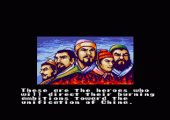
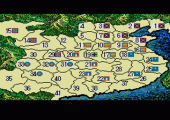
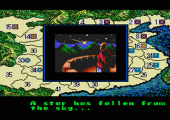
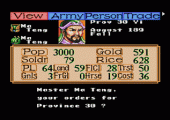
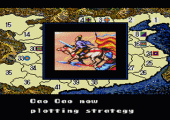
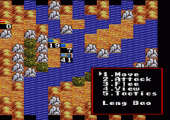
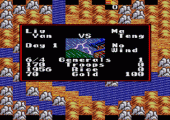
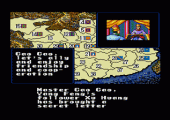
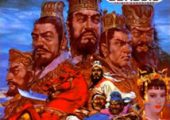
Recent Comments